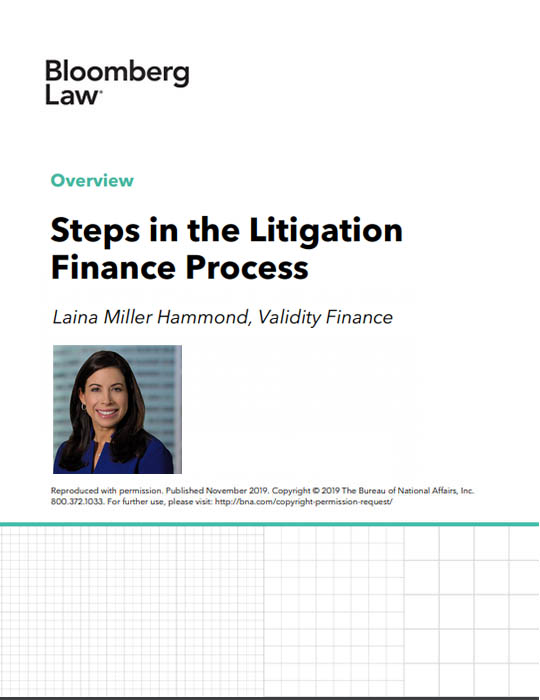January 8, 2020
Practical Guidance, December 2019
By Laina Miller Hammond
Reprinted from Bloomberg Law Litigation Finance in Focus
You call a litigation finance company and ask for funding. What happens next?
While there are lots of articles out there about litigation finance, precious few talk about the nuts and bolts of the funding process. This Overview covers how the funding process typically works, from before you even call a funder to after your case resolves. While each litigation finance company has its own methods for dealing with case evaluation and investment, most funders follow a similar process to the one laid out below.
Download the full article to find out more.
STEP 1: Should You Seek Litigation Funding?
Litigation finance can often be a very helpful solution for litigants and their counsel, but not every case calls for funding. The first step is to decide whether funding is right for you. Here are some helpful questions to consider.
STEP 2: Intake and the Non-Disclosure Agreement If you decide your case may be a good candidate for funding, you'll want to identify the right funder. Find out some of the key decision factors.
STEP 3: The Term Sheet and Diligence Process
After the initial assessment, a funder interested in pursuing your case will likely send you a term sheet detailing the scope and basic economic terms of the proposed financing. Find out what to expect and be prepared for in this process.
STEP 4: The Litigation Investment Agreement
Once the case clears diligence, the parties negotiate the litigation investment agreement (also called the funding agreement). Find out what to expect in this step.
STEP 5: Deal Closing and Monitoring
Once the deal is closed, the case is funded. What happens next.
Download the full article to help navigate the litigation finance process.
